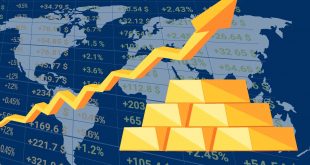European gas markets are tense as the EU tightens methane emissions rules while aiming to end Russian gas imports by 2027. Natural gas prices crept higher on June 13, 2025, signaling supply uncertainties and regulatory friction. As the bloc navigates the clash between green policies and energy needs, these pressures ripple through global markets. Here’s what’s fueling the strain and what lies ahead.
Gas Prices Tick Up on Supply Jitters
Natural gas prices rose 2.95% to $3.595 per MMBtu on June 13, 2025, at 10:07 PM EEST, driven by geopolitical risks and EU supply concerns. Recent Middle East tensions, though not impacting energy facilities, stoked fears of broader disruptions. The EU’s push to phase out Russian gas, which shrank from 45% to 18% of total gas imports since 2022, tightens supply. Heavy reliance on U.S. liquefied natural gas (LNG), now a primary source, faces challenges from new methane regulations, keeping markets on edge.
Methane Rules Meet Industry Pushback
The EU’s methane emissions law, effective since 2024 and set for full rollout by 2030, demands strict emissions monitoring for gas imports. Energy firms warn it could hinder U.S. LNG supplies, crucial for replacing Russian gas, raising energy security concerns. Some EU nations call for easing the law to reduce administrative strain, as storage levels falter. Targeting a 64% methane emissions cut by 2031, the regulation faces industry pressure for flexibility, exposing the friction between climate goals and supply stability.
Storage Challenges and Trade Dynamics
EU gas storage, at 52% capacity with key sites at 44%, struggles to hit the 80% goal by November, sparking winter supply worries. U.S.-China trade talks, easing tech export controls on June 9, and a consumer sentiment index of 60.5, up 15.9% from May, suggest robust demand. Yet, global methane leaks from inactive wells, far exceeding prior estimates, complicate emissions targets. The EU’s doubled U.S. LNG imports since 2021 hinge on resolving these regulatory and supply bottlenecks.
Redefining the Energy Equation
The EU’s gas market turmoil reflects a high-stakes balancing act between sustainability and security. Natural gas could climb toward $4 if supply risks escalate, but softened methane rules might ease price pressures. Investors should track U.S. LNG trends and upcoming U.S. inflation data, expected at 2.5% year-over-year. This market unrest isn’t just a blip—it’s a catalyst for rethinking energy strategies, urging a leap toward innovative solutions that harmonize green ambitions with resilient supply chains.

 Noor Trends News, Technical Analysis, Educational Tools and Recommendations
Noor Trends News, Technical Analysis, Educational Tools and Recommendations




